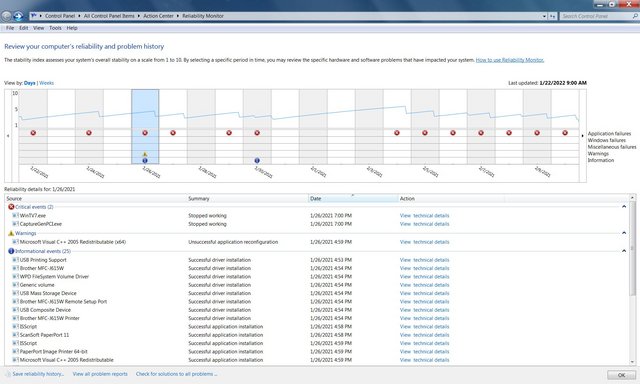Ways to fix audio issue in Window 10 :-
1. Confirm That the Volume Isn't Muted
First, you should get the most obvious fix out of the way. If you have no sound on your computer, double-check to make sure that you haven't muted the audio. Click the Volume icon at the bottom-right corner of your computer to check the master volume; make sure it's not muted or set at an extremely low level.
After this, right-click on the same icon and choose Open Volume mixer to see the current volume level for all apps playing audio. Turn these up as needed, confirming that they aren't muted by mistake.
Volume mixer in Windows 10
Be sure to check the volume level of any active apps, games, video players, or similar too. Even if you have both the master and browser volume levels turned up, a muted YouTube video will still produce no sound.
On a related note, close any audio-heavy apps you aren't actively using. Some programs can take control of your audio device, so you won't hear anything from other devices. For example, while using Bluetooth headphones, being in a Discord call can prevent you from hearing audio from other apps.
Before moving on, it's also wise to restart your computer at this point. Your sound issue could be temporary, perhaps due to a pending update that has locked audio output.
2. Make Sure You're Using the Right Audio Output
If you have more than one audio output connected to your computer, it's possible that Windows is playing sound through the wrong device.
To change the device being used for playback, click the Volume icon again. Above the volume slider, you'll see the name of the current device, if you have more than one enabled. Click this, then select the option that you want to use from the list.
Windows Switch Volume Output
This is just a quick switcher, so it might not show all available devices. To see a full list of audio devices connected to your PC, right-click the Volume icon and choose Open Sound settings. This acts as a shortcut to the Settings > System > Sound menu.
On this page, click Manage sound devices under the Choose your output device heading to see everything that's connected to your computer. Use the Test button for any of the available devices to play a quick tone.
Check the Disabled section to make sure you haven't turned off the device you want to use. Click an option and hit Enabled to turn it back on, if needed.
Windows Sound Devices
If you don't see the audio output you expect, or it doesn't work, continue on with the below steps. Your speakers, headphones, or other device need further troubleshooting.
3. Check All Audio Cables and Wireless Connections
Next, you should check the physical connections of all your audio devices, especially if your desired output didn't show up in the above menus.
Make sure that all audio (and power) cables are firmly plugged into your computer, as well as into the device. It's a good idea to unplug and reconnect everything, just to make sure there are no loose connections. Confirm that you have the audio cables plugged into the right ports.
If any cable is frayed, excessively bent, or otherwise damaged, it might be unusable. You may have to jiggle it to get a good connection. If possible, consider replacing worn-out cables.
For wireless audio devices like headphones, visit Settings > Devices > Bluetooth & other devices and make sure you've paired your device to your computer properly. See how to troubleshoot Bluetooth in Windows 10 for more help with wireless devices.
Windows 10 Bluetooth Enabled Settings
If you also use those Bluetooth headphones with your phone or something else, disconnect them from the other device first, then try connecting them to your Windows PC again. Trying to play audio from your computer to your Bluetooth headphones won't work when those headphones are currently connected to your phone.
Finally, try disconnecting all audio devices from your PC except for the one you want to use, in case there's something interfering with another device.
4. Try the Windows Audio Troubleshooter
Before you go further, it's worth running the built-in audio troubleshooter. This allows Windows 10 to identify and fix issues on its own—sometimes. These Windows troubleshooters don't always fix the problem, but it's worth a shot before you dive in deeper.
Head to Settings > Update & Security > Troubleshoot > Additional troubleshooters and select Playing Audio. Follow the instructions, and hopefully Windows will correct the problem automatically.
This may help you,
Rachel Gomez
